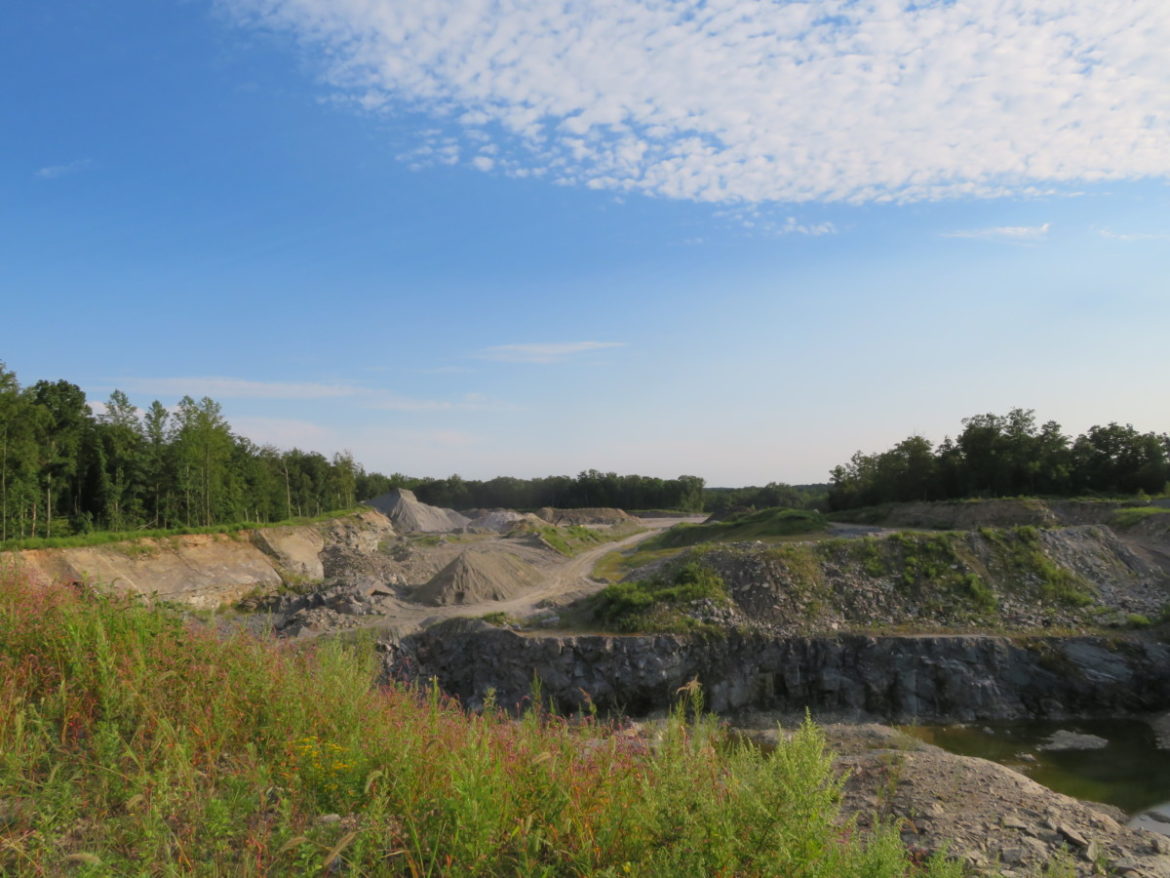BRIDGEPORT, CT — Peter Metropoulos is appealing the Monroe Inland Wetlands Commission’s and Planning and Zoning Commission’s approvals for a wetlands restoration plan and an excavation and filling permit for adjacent industrial properties in the Pepper Street Business Park.
Metropoulos is trustee to The Thomas C. and Stella Maganas 1988 Family Trust, the owner of 36 Timothy Hill Road, a neighboring property, and his attorney, Joel Z. Green, is asking for a cease and desist order for activities there.
Metropoulos said he is concerned over the possibility of contaminants getting into his well water and because the site is near the Pequonnock River watershed. The owner of the industrial properties points to soil testing, in which no contaminants were found.
The town approvals allow the developer to remediate environmental violations at 64 Cambridge and 4 Independence drives, where wetlands were severely damaged by a quarry that operated for over a decade, leaving a massive hole.
The Planning and Zoning approval of the excavation and fill permit allows over 27,000 dump truck trips to fill the hole, which is 30 to 40 feet deep, over a period of five years.
The applicant, Arnold Karp, managing partner of Astro Land Holdings LLC and Spacely Land Holdings LLC, which own the sites, has said restoring the wetlands will address past violations and make way for commercial buildings, providing positive tax revenue for the town.
Judge Dale W. Radcliffe presided over a hearing at Fairfield District Superior Court in Bridgeport Thursday morning. He combined both appeals into one hearing.
The town of Monroe is being represented by its land use attorney Barbara Schellenberg and the co-defendants, the industrial property owners, are being represented by the law firm of Wofsey, Rosen, Kweskin & Kuriansky LLP.
Attorneys representing the property owners during Thursday morning’s proceeding were Stephen A. Finn and Zachary J. Phillipps.
For the plaintiff, Green was assisted by Attorney Linda Laske.
Is a wetlands permit needed?
Radcliffe asked why the Planning and Zoning Commission approved an excavation and fill permit without making it contingent upon the owner obtaining a wetlands permit for the regulated activity.
Phillipps said the extensive site work is necessary to address the environmental violation and restore the wetlands.
Schellenberg expressed the town’s opinion that the restoration approval by the Inland Wetlands Commission allowed the applicant to obtain an excavation and fill permit from the Planning and Zoning Commission without it being subject to a wetlands permit.
Throughout the hearing she deferred the judge’s questions to the property owners’ attorneys. Radcliffe often pushed for answers, saying he wanted her opinion as a representative of the town.
In this case, Schellenberg said the town agrees with the applicant’s position.
“I very much appreciate your comments,” she told the judge. “[The town is] not always in lockstep with an applicant’s position and if Mr. Phillipps says something and I want to comment on it, I will.”
Radcliffe said if he was an applicant who wanted to build a building in an upland review area on a property with no violations, the town of Monroe would require a public hearing for a wetlands permit for the regulated activities.
By not requiring a wetlands permit and public hearing for activity at 64 Cambridge and 4 Independence drives, the judge said it seems to show a preference for property owners with an environmental violation on their property.
“My concern is the town of Monroe issued an excavation and fill permit in an upland review area without a wetlands permit for regulated activity,” Radcliffe said.
The judge noted that Metropoulos, an abutting property owner, only had the right to speak during the proceedings because he knew of a statute allowing him to file for intervenor status.
By the town not requiring a wetlands permit, the judge said the public did not have its right to be heard.
“An inland wetlands commission does and should have authority to give orders without a hearing and public notice,” Finn contended.
The defendants also argued that the excavation and fill permit application did not include the construction of a building.
Phillipps said it was made clear that any future buildings would require a site plan application for a special exception permit, as well as a wetlands permit.
The intent
Green argued that the property owners’ plans went beyond correcting an environmental violation. “It’s for future development,” he said.
Green said the first page of the application’s narrative mentions three stormwater basins designed to handle runoff from future development and two construction pads.
“What regulation requires pads for a remediation?” Radcliffe asked.
Finn said two slopes would be created to direct stormwater runoff to rehydrate wetlands and vernal pools that had been deprived of water when the old quarrying operation caused the pooling of water away from those areas.
He said it is “incidental” that the slopes could be built on.
Phillipps said the stormwater basins are a necessary part of correcting the violation, but can also handle future development.
“It doesn’t say for remediation,” the judge said. “It says designed to handle future site development.”
Phillipps said just because one line in the narrative mentions future development, it doesn’t mean it is not a site restoration plan.
Green said the plan also mentions trees and shrubs for an office building, adding, “I just went at the low hanging fruit.”
Green also argued that the properties should be subdivided into two lots, because of a lot line revision. But Finn said his client complied with wetlands regulations by filing a map with the revision at the Town Clerk’s Office in a timely manner.
The judge seemed to agree with Finn on this point.
Hearing continued
Both sides argued over whether the Planning and Zoning Commission granted too many waivers for the excavation and fill permit, and about the plaintiff’s contention that there is pollution from unclean fill brought to the site.
Finn said an environmental expert did soil testing on the site and no pollutants were found. He said enforcement of any violations is under the purview of the Connecticut Department of Energy and Environmental Protection.
Finn said the DEEP was on the site many times, often in response to Metropoulos’ complaints, and no violations were found.
All respectful comments with the commenter’s first and last name are welcome.







Bill,
I appreciate you taking the time to drive to Bridgeport and to report on these Appeals.
I believe Attorney Finn misspoke when declaring that NO violations were found by DEEP.
Mark Jepsen of DEEP visited the site several times and witnessed massive amounts of materials which qualify as Solid Waste.
Solid Waste includes material
Such as asphalt chunks smaller than 4”, concrete with rebar, material from Brownfield Sites, etc…
All of which have been proved to have been illegally imported to this site for a hefty fee.
A property is in Violation if more than 10 Cubic Yards of Solid Waste material is discovered to have been imported and stored on a site. That equates to only half of one truck load.
Thousands and thousands of truck loads Solid Waste were imported to the site.
The problem is that DEEP is under staffed with an ever shrinking budget for enforcement and Mr. Jepsen has retired. So the Site Owners have yet to be prosecuted for the Violations.
I hope in the future that the Connecticut Legislature provides DEEP with the funds to enforce prosecution of those who take advantage of the system.
Now the bankers have all that work to comply with the warrants.